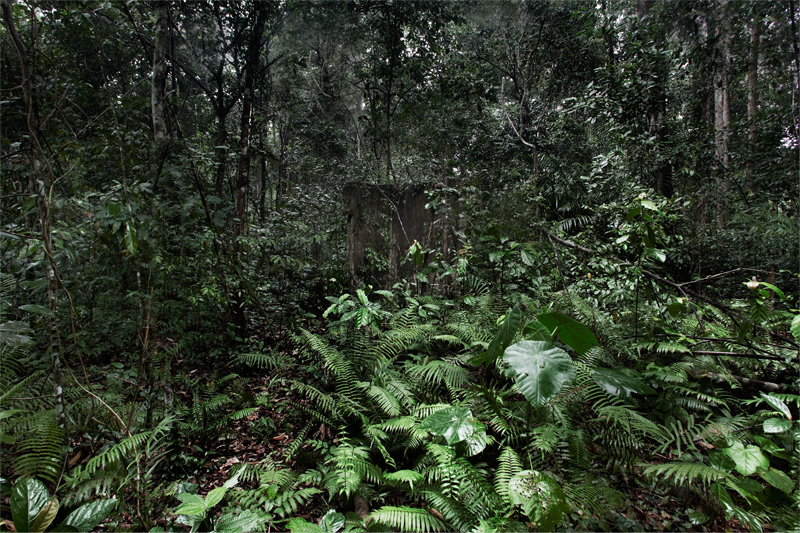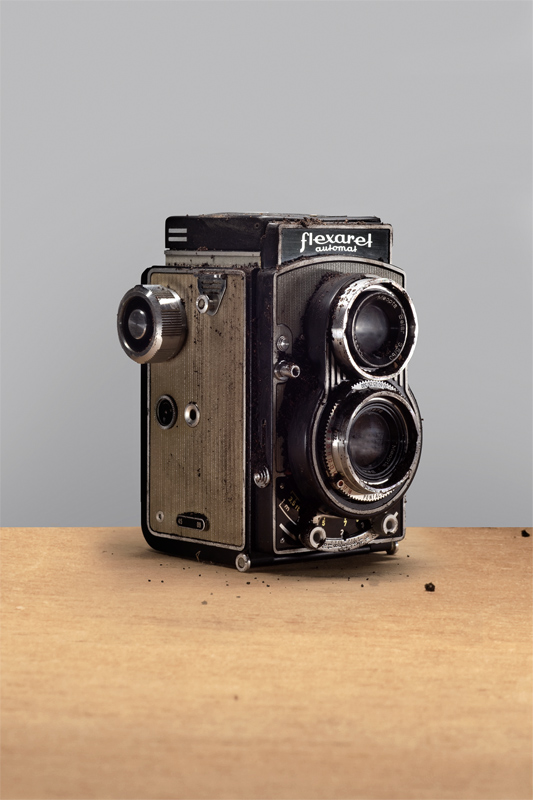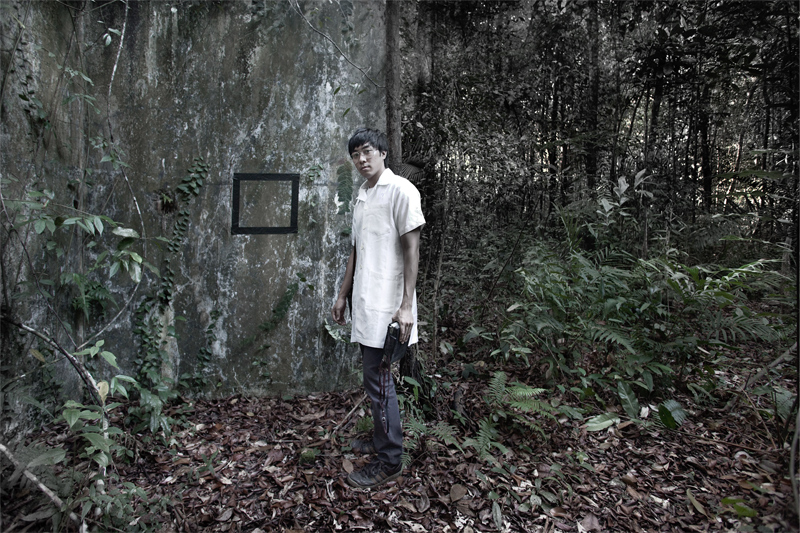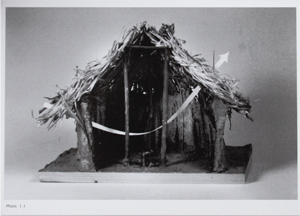All images by the ICZ
File 11: A wall in the forest
posted by Matsuo, on 09/07/2009
On 21st June 1998, Professor Naoto Sato and his team discovered many sections of lead walls in the middle of the Guiana Highlands Plateau of Roraima of Brazil about twenty kilometers west of Tiger Pond Village while on an expedition with the ICZ. The lead walls dated from around 1951 to 1955.
 Lead wall, Guiana Highlands Plateau, Brazil, 1998. Naoto Sato
Lead wall, Guiana Highlands Plateau, Brazil, 1998. Naoto Sato
On 22nd April 2006, Professor Masayuki Yanai, head of archives in ICZ, made an interesting connection to Professor Sato’s discovery while on a visit to The Museum of Jurassic Technology in Los Angeles, California. Professor Masayuki believed that Professor Sato had uncovered remnants of an earlier experiment conducted by Donald R. Griffith of the Rockefeller University in 1952.
In Griffith’s experiment, he managed to contain the first Myotis Lucifugous in some lead wall installations in the plateau of South America. The mysterious Myotis Lucifugou is a documented species of bat during the 1950s which possessed the ability to fly unharmed through solid objects with the help of an increased frequency in echolocation. In other words, the bat was able to fly through objects with the help of X-ray emissions, a rare evolution trait to combat the increasing density of the rain forest environment.

Flexaret Automat, Meopta. Possibly 1950s. Guiana Highlands Plateau, Brazil, 2006.
Item #0122911012. Masayuki Yanai, 22nd April 2006.
Notes: The Flexaret Automat was a common camera used by scientists in the field till the 1960s due to its light weight aluminium body.
Site #B12, with one roll of film inside. Possibly from previous expedition.
 Lead wall, Masayuji Yanai, Guiana Highlands Plateau, Brazil, 2006.
Lead wall, Masayuji Yanai, Guiana Highlands Plateau, Brazil, 2006.

Image of Dozo dwelling. Mstn 1.1.
Postcard collected by Masuyuki Yanai from The Museum of Jurassic Technology, 2006.
Postcard overleaf reads:
Model of a Dozo Dwelling from the exhibit Bernard Maston, Donald R. Griffith, and the Deprong Mori of the Tripsicum Plateau. (The Museum of Jurassic Technology)
A team was despatched to reassess the original site of Sato’s discovery to extract the block of lead which contained the Myotis Lucifugou. The team was not able to uncover the Myotis Lucifugou said to have been trapped in the lead walls but instead uncovered a series of personal artifacts which we believe to belong to Griffith during his time spent on the Guiana Highlands.
Note: The Guiana Highlands was also known as the Tripsicum Plateau during the 1920s to the 1950s.
It is commonly believed that The Museum of Jurassic Technology (MJT) perpetuates fiction within its museum but it has been extensively proven that this is not true. (Wescher, 1995) Instead, most of what the MJT exhibits in its museum are obscure, isolated facts and generally forgotten or overlooked in general scientific history. Instead of looking at the MJT as an unorthodox museum of artifacts (like a dime museum), we can perhaps look at the MJT as a museum that reintroduces an old definition of science, as a discipline that can still bring about a sense of wonder in the discovery of knowledge, a feeling which modern science has stripped away.
Most of its more bizarre exhibits, an African stink ant with a horn sprouting from its tiny head, a micro-miniature of Pope John Paul II and a horn sawed off from a skull of a seventy-year-old woman are real objects and far from the fictions which we might expect them to be.
Reference documents from the Deprong Mori (a bat) files include two photographs and two illustrations. Although historical objects and documents are presented within the MJT, the public seldom believes, or finds it hard to subscribe to what the MJT presents to them. There isn’t an eager reception to the facts which are presented to the audience, instead, there is a hesitation to the subscription. One reason can be because the MJT does not operate within the norms of the information system today. The MJT does not create documents to fit a narrative for the audience; instead it attempts to discover a narrative from historical documents thus creating a hesitation and doubt in reading MJT’s exhibits.
Besides an online existence at http://www.mjt.org, the museum is actually housed in a bricks-and-mortar address at 9341 Venice Boulevard in the Palms district of Los Angeles, California. "The Museum holds a specialized repository of relics and artifacts evoking some of the more obscure and poetic aspects of natural history, the history of technology and science, and their entwined realizations in human artistry and ingenuity," says its Wikipedia page.
Weschler, L (1995) Mr Wilson's Cabinet of Wonder. Random House
Copyright 2010, Institute of Critical Zoologists